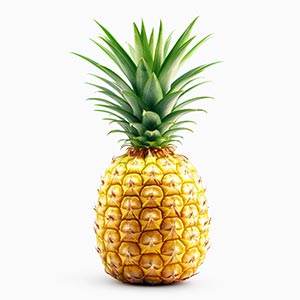Pineapple, or Ananas comosus, was first spotted by Christopher Columbus in 1493 on the Caribbean island of Guadeloupe. The fruit was later taken back to Spain, where it was greatly appreciated for its sweet taste. However, due to the tropical climate required for its growth, attempts to cultivate it in Europe were unsuccessful. In the mid-17th century, pineapples were grown in a few hothouses in England and the Netherlands, under conditions that mimicked the tropical climate needed for the fruit. Due to their high demand and low supply, only the extremely wealthy could afford them. They were seen as a symbol of luxury and opulence. In the American colonies in the 1700s, pineapples were revered and were very expensive. They were imported from the Caribbean islands and were seen as a symbol of wealth, hospitality, and status. Despite their high cost, they were mainly used for decoration at the time. Today, pineapple is used in the fragrance industry for its sweet, tropical aroma. It produces organic compounds known as carboxylic acid esters, which are used in cosmetics, perfumes, and synthetic flavorings.
Natural or Synthetic?
The natural extraction of pineapple scent is extremely challenging and not commercially viable. This is due to the fruit's composition, which does not lend itself well to traditional extraction methods like steam distillation or cold pressing. The scent compounds in pineapple are delicate and can be destroyed or altered during extraction. Therefore, synthetic alternatives are used to replicate the pineapple scent. These synthetics are usually concocted from a mix of esters, alcohols, and other chemicals to mimic the sweet, fruity, and tropical notes of pineapple. Common chemicals used include Ethyl Butyrate and Hexyl Acetate, which contribute to a fruity, sweet aroma resembling pineapple.
Fragrance Families Pineapple Most Commonly Found In
Show fragrances that contain Pineapple as a note



